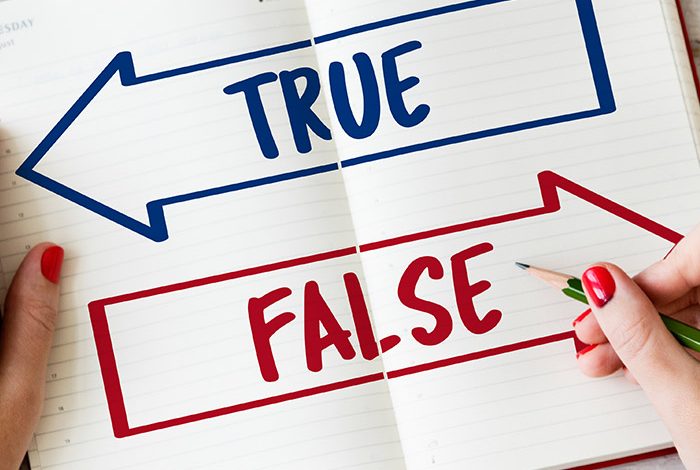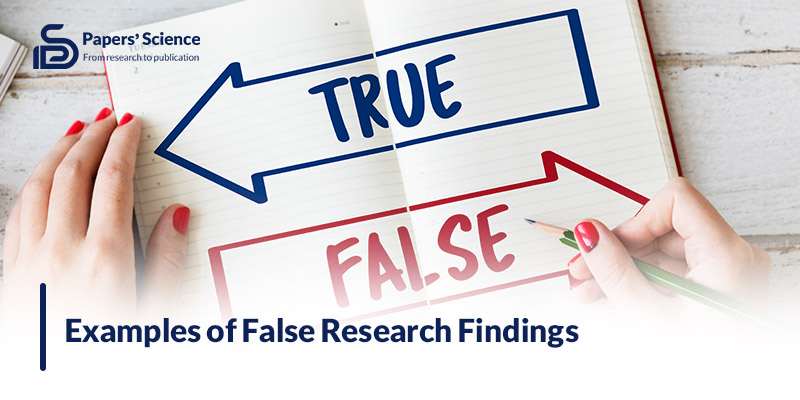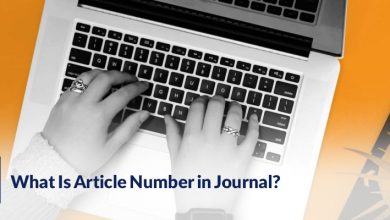Examples of False Research Findings: What They Are and How to Avoid Them

Regarding the research community, reporting false findings can cause serious issues since it leads to misleading readers on a large scale, especially in health science and medicine, which can put human health in danger.
In addition, reporting false results wastes time and financial resources that could be invested in other fields.
To learn more about false research findings and their examples, we recommend you join us through this article to avoid getting into trouble.
What Are False Research Findings?
Here are factors that one paper is considered to publish false findings:
There are many ways that false findings can occur, including:
- Sampling bias
Studies based on case-study should offer a proper sample size depending on the topic to provide valid results. - Selection bias
The way samples are gathered for study matters, including the group of people, their gender, and the region from which they are collected. These factors can significantly impact the research results. - Confirmation bias
Suppose a researcher has a biased perspective toward a project and conducts research outside the scope of the task. In that case, it is more likely that they will transfer their biased perspective to the results to confirm their preconceptions. - Data manipulation
Researchers sometimes manipulate data to confirm their work is worth publishing in authentic journals. - Misinterpretation
If the researcher measures the data wrongly, which does not fit the evidence, it can result in a false finding.
Examples of False Research Findings

- The MMR Vaccine and Autism
One of the well-known examples of false research findings is the claim that the MMR vaccine (measles, mumps, and rubella) can cause autism. In 1998, British gastroenterologist Andrew Wakefield published a study in The Lancet journal suggesting an association between MMR vaccines and autism.
After years, it was found that his finding was false and fabricated.
Despite numerous studies finding no link between vaccinations and autism, the false claims continue, leading to lower vaccination rates and possible diseases.
- The Fat Gene
A 2006 study published in the New England Journal of Medicine linked the gene FTO to obesity. The research received much media attention, with headlines announcing the discovery of a “fat gene”.
However, subsequent research has shown that genetics account for a small amount of weight variation and that other factors, such as diet and exercise, may play a larger role.
Read More: Literature Review in Research Paper Example
How to avoid false research findings?

Here is the list of things that you can avoid false research findings:
1. Employ a valid number of samples
When it comes to surveys, you will face the question of how big the sample size should be.
You need help from a sample size calculator or statistical guide to ensure that your study samples authentically represent the target group you want to study.
2. Select a sample group randomly.
After calculating the sample size, you need to choose your sample. In this step, you should randomly select your study sample from the target population to avoid prejudicially choosing samples.
3. Be aware of your biased confirmation.
The survey has no room for personal hypotheses; you should rely on the result. When you are not open enough to all possible outcomes in the survey, the result of the study can be affected by your opinion.
So, when you see that outcome of the study does not support your hypothesis, you can re-analyze the data, and when you end up with the same result, approve it.
4. Don’t manipulate data.
After analyzing the data and seeing that the result differs from what you expected, don’t manipulate the data to reach the desired one.
Instead of manipulating data to change the result, report the data and result as it is.
5. Clarify your research question.
To do a survey, you must determine your research goals and the questions around the topic. What is your goal for the survey?
By doing this, you will know what you are looking for, and you will be clear in doing analysis and survey, and as a result, your result will be authentic.
6. Employ appropriate statistical methods.
There are several statistical methods for analyzing data, but each varies in different points. According to your study type, sample size, and other factors, you must find the best fit for your study to avoid reporting false findings.
7. Do experiments correctly
In addition to doing statistical analysis properly, you must ensure that the steps you follow are right while doing experiments.
Because in some surveys, particularly in health science, a little overlook or substitute can change the whole result. So, to prevent the false finding, check the protocol with previous papers.
8. Ensure research integrity
Ensure that you stick to high standards of research integrity, such as honesty, transparency, and accountability throughout the survey.
Final words
In research, reporting true results is important since lots of resources are invested in this field to get the right answer to research questions.
When researchers report false results, the survey becomes meaningful, and it can mislead the next research and cause serious issues that can damage human life.
We hope you read this article helpful for examples of false research findings and could help you address your issue.
If you have further questions on examples of false research findings filed, please share them with us in the comment section.

What do you think is the most important step researchers can take to prevent false research findings?



